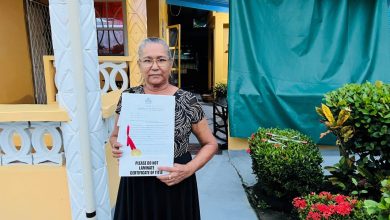Op-Ed | New York City is in Trouble
It is time for New York’s lawmakers to take action. Here are some possible solutions to fix housing in 2024.
Only 11,000 new housing units are likely to be built in 2023. Tens of thousands of rent-stabilized apartments sit empty because the cost of renovations is too high, and there is no avenue to fund them. Insurance rates have skyrocketed as carriers have exited the market or refused to write policies for affordable multifamily housing. Multifamily buildings carry an unfair and disproportionate part of the property tax burden, which drives up rents. Housing court is backlogged. And vouchers remain unusable for too many due to housing scarcity, despite a parallel crisis causing shelters to overflow with asylum seekers.
New York City is in trouble and it is time for lawmakers to take action.
For too long, lawmakers have created and implemented poor housing policies that have placed major financial stress on both publicly and privately owned affordable housing. Years of poor policy-making have raised the question of whether there is any future for affordable housing in New York.
This legislative session, the Community Housing Improvement Program and our allies are advocating and lobbying for common sense solutions that won’t cost taxpayers billions of dollars. These policy reforms will increase the supply of available rental housing and dramatically reduce the operating costs of housing, leading to better quality of life and more affordable rents for tenants.
First, the legislature can back the Local Regulated Housing Restoration Adjustment (LRHRA), introduced last legislative session by Senator Leroy Comrie and Assemblymember Kenny Burgos. Tens of thousands of apartments are currently unable to be re-rented due to high renovation costs and rents below operating costs. The bill would mandate lead and asbestos removal and code compliant renovations in these units and allow a new rent to be charged that is in line with other stabilized apartments in the geographic area, ensuring apartments remain stabilized, lead-free and compliant with all city laws, and available to voucher holders. It would affect approximately 30,000 units immediately, and another 100,000 apartments in the future.
Lawmakers can also address the costs of housing by reforming the unfair and inequitable property tax system that disproportionately harms the city’s most vulnerable New Yorkers, especially renters. Multifamily buildings, which do not receive any as-of-right tax breaks or subsidies, pay 5.9 times as much in taxes than a single-family home with the same market value. One legislative solution would be the creation of a new tax class for rent-stabilized buildings with more than 35% of their units regulated, which would be subject to a tax on their income rather than their assessed value. If we truly believe that affordable housing is a necessity then we shouldn’t be taxing it at an effective rate that is roughly four times more than we tax luxury items.
Another way to reduce costs would be to create a government-backed insurance program that would protect housing providers and cap insurance costs at no more than 8 percent of rent collection. Insurance premiums have skyrocketed as carriers have either left the market or refused to write policies for affordable housing, specifically pre-war rent-stabilized buildings with low rents and a large number of voucher holder tenants. In the Bronx, some housing providers spend up to 25% of their rent collections on insurance premiums, even though they have never had a claim against their buildings.
Other legislative fixes include coming up with a program that works with housing providers and tenants on assistance to address rent arrears that does not require housing court; supporting the thoughtfully designed Housing Access Voucher Program (HAVP) that would travel with tenants and be easier and more reliable for housing providers to use; and embracing zoning reforms that would dramatically increase the housing supply, like transit-oriented development, ending parking minimums, ending the restrictions on Accessory Dwelling Units (ADUs), and increasing the floor-to-area ratio (FAR) cap.
CHIP believes that it is not too late to fix what has been broken. But another year of inaction will make things worse. We need to start solving these difficult problems in 2024, or the city and state will suffer.
We just hope lawmakers agree.
Adam Roberts is the Policy Director for the Community Housing Improvement Program




